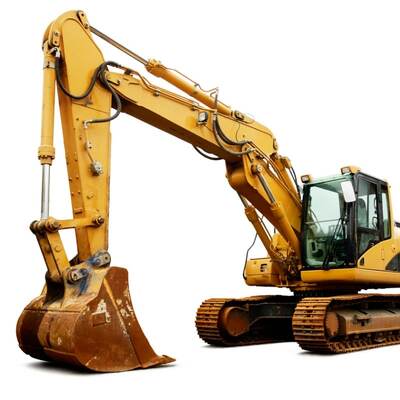Whether you’re levelling a hill or simply driving up it to reach the worksite, knowing how to safely navigate and work on slopes is important for anyone using earthmoving equipment. This ensures that everyone working on the site is safe, injuries and accidents are prevented, and machinery is not at risk of becoming damaged through easily avoidable circumstances.
How Should Earthmoving Equipment Be Used on Hills?
While the majority of earthmoving equipment you encounter can handle some pretty steep slopes, it’s important to be extra careful when dealing with these kinds of conditions. Otherwise accidents can easily happen.
Survey the Slope First
From checking weather conditions to looking out for loose rocks, knowing what you’re dealing with is key to safe operation of your earthmoving machinery on and around a slope. You may need to attend to the slope to make it safer for the machinery to be used, or simply wait a few days for the conditions to improve.
Know What You & Your Machine Can Handle
Depending on how your heavy earthmoving equipment has been designed, it may have limitations when it comes to slope work. For instance, typically anything greater than a 70% slope (about 35º) can create issues with engine lubrication. While this might not necessarily be an immediate problem, it will come into play soon enough when the engine becomes oil starved.
Similarly, if you are just starting out and getting used to using various earthmoving machinery, you need to know your limits too. If you do not feel confident in handling the slope — and have the experience to back up this confidence too — it’s time to look at another option.
Pick the Right Machine for the Job
Further to the above point, some machinery is better suited to slopes than others. A long-reach excavator, for example, may be able to get the job done without having to leave stable ground. This way, you can avoid the issue of working on a slope altogether. For more complex terrain, you may need to turn to more specialised machines, like spider excavators, to safely complete the work.
Tracks Should Be Kept Pointing Up & Down, Not Sideways
If you’ve ever tried to walk across a steep slope, rather than up or down it, you know how much work that can be for your leg muscles to keep your balance. The same applies to earthmoving equipment. Except, as you’re dealing with exceptionally larger and heavier loads, a loss of balance isn’t going to result in just a sprained ankle. So, avoid moving any earthmoving equipment across the slope — aim to approach it head-on with the machinery as balanced as possible.
Select Tracks With Extra Traction
Speaking of tracks, you can also improve your machinery’s traction on slopes by using single-bar grousers. These tracks actually penetrate the ground, basically holding your machinery in place. Think of them like the difference between a business shoe and jogging shoe: one has a sole designed for gripping the ground, even at high speeds and on uneven surfaces, and one is suited to less movement and use on flatter surfaces.
Manage Attachments for Safe Weight Distribution
You also need to take into account how various attachments will affect the machine’s balance as you go up and down the hill. For instance, when moving an excavator uphill, the attachment should be out and forward, while low to the ground. This lowers the machine’s centre of gravity and keeps it further forward, helping ensure you maintain traction. Just don’t forget that as you come to the crest of the hill, you’ll likely need to raise the attachment a little to make sure it clears the ground. This only needs to be a small adjustment though; otherwise the machine can topple backwards.
In the same vein, if you have to work on the slope, you need to factor in how the movements and weight of any attachments will affect the base machine. Therefore, aim to make all movements smooth and slow, and ensure that you do not carry so much weight as to off balance the machine.
Stay Safe With Quality Earthmoving Equipment & Attachments
Along with following the steps above, it’s important to look over your machinery and attachments regularly. If it is showing signs of wear or isn’t up to the task at hand, there are replacement options at Bunyip Equipment. We have a variety of quality tracks, excavator attachments, buckets and teeth, and much more, so you can safely carry out your day’s work, whether you’re on a slope or level ground.

 CART
CART


 Contact Us
Contact Us





























 VIEW ALL BRANDS
VIEW ALL BRANDS





























